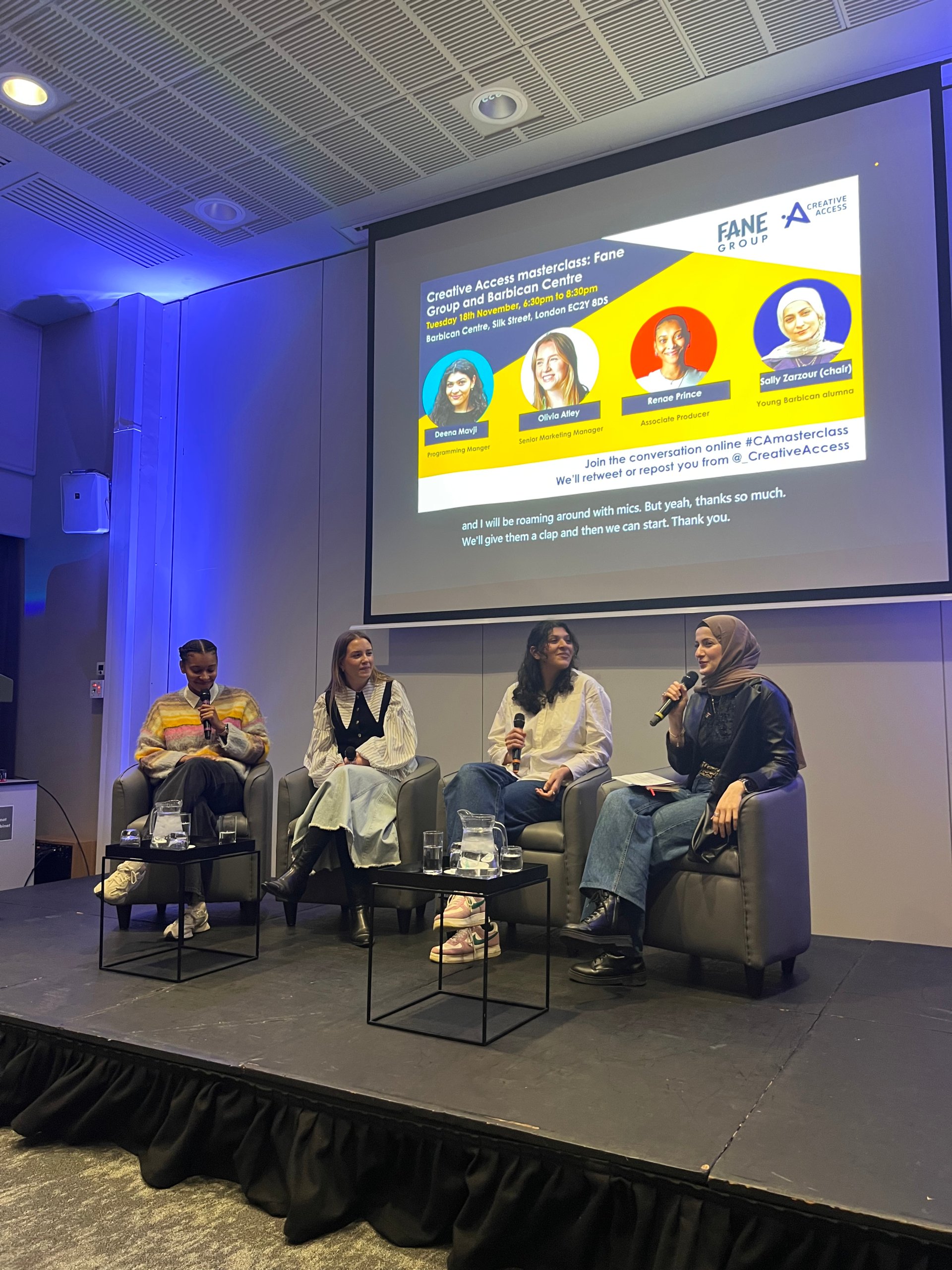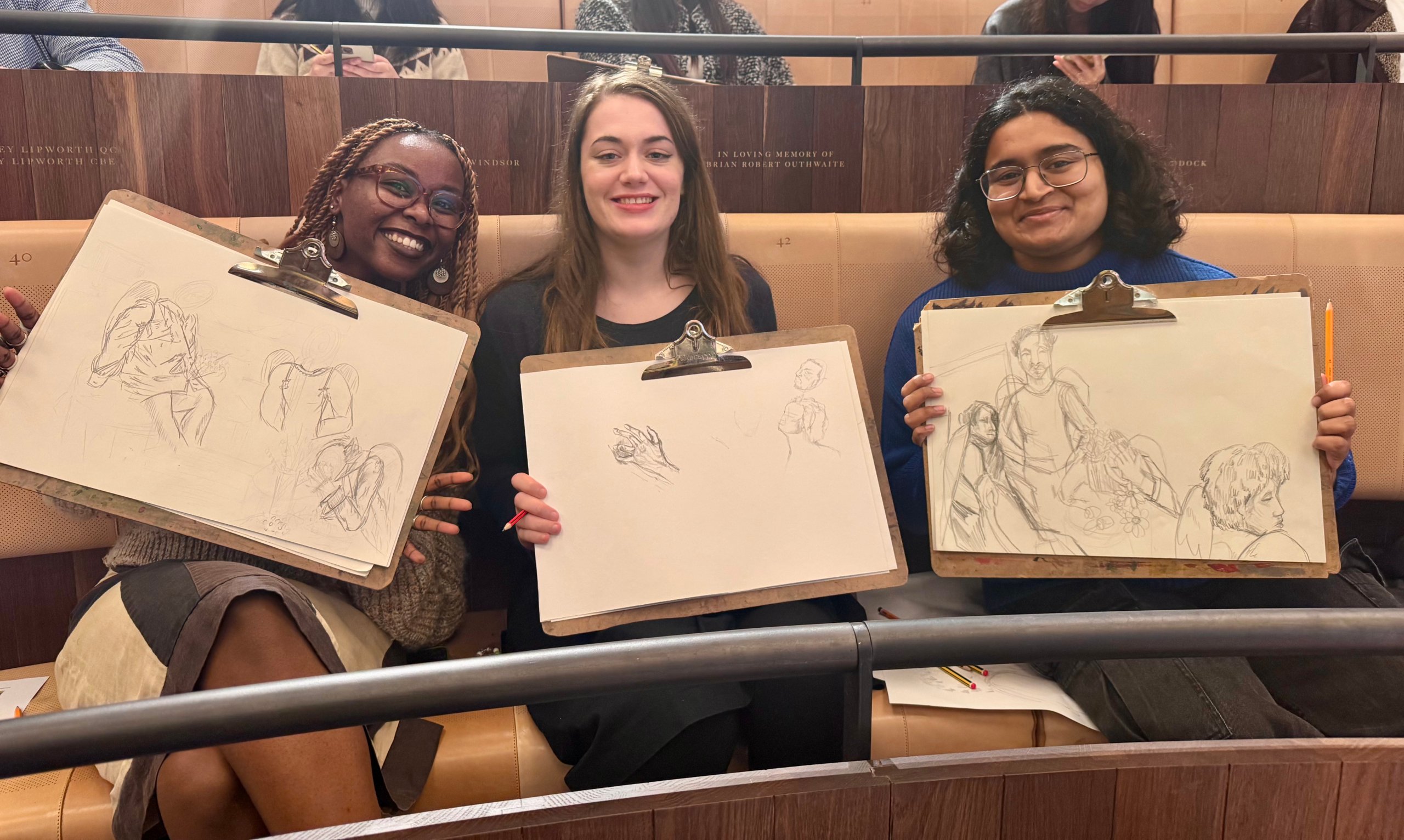
After a summer hiatus, the Creative Access masterclass series came back with a bang this week. We saw new and old members of our community flood to South Kensington’s V&A museum for a night of networking and a private viewing of the V&A’s latest exhibition, Gabrielle Chanel: Fashion Manifesto, which explores the woman behind the brand and how her radical designs shaped the modern woman’s style. A special highlight included the wonderful introduction we were given by co-curator Connie Karol Burks, who shared what a day in the life of a curator looks like and a behind the scenes look at the journey to launching the exhibition.
V&A’s Connie Karol Burks on becoming a curator
Burks’ avenue into museums started with dropping out of her first course at university. Her ‘squiggly career’ demonstrates fierce passion and dedication, a familiar feeling to our room of both aspiring and seasoned pros from the creative industries. Burks realised that she wanted to attend art college, and after a string of internships at small galleries and years in retail, she co-founded a weaving company. With an interest in the history of fabric, she underwent an MA and volunteered at the V&A often. After lots of unsuccessful applications, she said: “They finally took a chance on me with a 6-week placement, and I’ve been here for 7 years.”

Burks emphasised that her experience in retail and in small galleries helped prepare her for what is such a varied role with lots of different responsibilities. She spends much of her time on objects in the permanent collection in the museum – researching and cataloguing them – as well as administration, “quite a lot of bureaucracy”, and checking for clothing bugs. She added: “I can tell my carpet beetle from my clothes moth”. There’s also a “horrifying amount of excel spreadsheets” and lots of writing text – both for objects and publications.
Introducing the exhibition
If you have tickets, enjoy this preface. If you haven’t, we’re sharing our takeaways (and sign up to hear about the next masterclass so you never miss out!). The immersive exhibition is across ten spaces that follow a loose chronology, mapping out the unique elements of Chanel’s vision that still influences how we dress today. We learn so much about the designer who introduced a chic, stripped-back silhouette approach to women’s wear, the V&A team made a conscious decision to catalogue her biography alongside her work – from fashion to beauty.
Burks told us that her team started with looking at the objects and conducted research trips to Gabrielle’s apartment to get to know the woman behind the designs. Eventually, Burks had immersed herself in Chanel’s world, and the exhibition took around two years’ worth of work ahead of the launch. They have, in part, contextualised Chanel’s work with her upbringing and life experiences, as her work took her from poverty to the life of the elite with aristocratic company. Born in 1883 to an impoverished family, she spent a lot of her childhood in an orphanage after the death of her mother. Her entry into fashion wasn’t until 1909 when she opened her salon in Paris as a hatmaker.
The emergence of style – Chanel’s template for fashion
Burks discussed that Chanel’s influences likely stretch as far as fishermen in Dover, when she established a boutique there in 1912. One blouse dates back to 1916 and replicates the style of a fisherman’s pullover, and it’s men’s tailoring that inspires a sequin suit of silk taffeta – unusual for women’s couture at the time. This is the first garment you see in the exhibition, and in everything that follows you see small remnants of two major influences – the time she spent in Britain, and her adaptations of designs traditionally made for men that allow a comfortable life.

“[Chanel’s] focus on comfort was quite radical for her time” Burks said, and her lifelong ethos was to make clothes for herself, first and foremost. She worked with the best textiles, and her choice of fabrics were so important, only enriched by her connections to British and French manufacturers. Burks delved deeper into Chanel’s achievements, which include the popularisation of the little black dress, the No.5 perfume, and the innovative design of the dress that could be appropriate for all day.
What story does the exhibition tell?
“With this show, it was a treat to focus on Gabrielle Chanel, to unpick the myths and the broader explanation of what she was doing. To undo the caricature and fill in the gaps.” Burks said.
We learnt that Gabrielle Chanel was in some ways, remarkably modern and ahead of her time. She designed open back asymmetric dresses, women’s suits that rejected the padding of traditional tailoring, and her perfume’s minimalist packaging and simple typography still stands today. Chanel’s eveningwear produced in the second half of her career when she was well into her seventies, was still attuned to the fashion world’s barometer whilst staying true to her fashion manifesto. However, she also had an “interesting” life as Burks describes it, which refers to her dark past of antisemitism and ties to a German general during the war. We were told the insertion of the timeline of her life seeks to face this head on, with an acknowledgement of the artist behind the art. Burks emphasised that museums are exactly the right place to have this topical discussion.
The exhibition certainly gives you a taste of her eccentric character, told creatively through dimensions such as the evening gowns positioned along a mirrored staircase. It’s the staircase that emulates that of her original salon in Paris, that she would sit at the top of to hide and watch the reaction of her guests as they entered (see top image). It was a brilliant opportunity to see the show, which is sold out until May 2024. After networking took place and the crisps had been eaten, the event finished. We eagerly await the next.
A big special thank you to the V&A, Connie Karol Burks and the Creative Access community. Don’t miss out on the next Creative Access masterclass. Sign up now.




